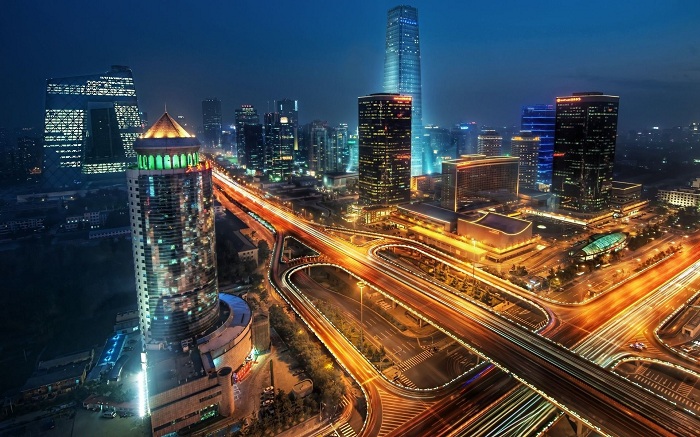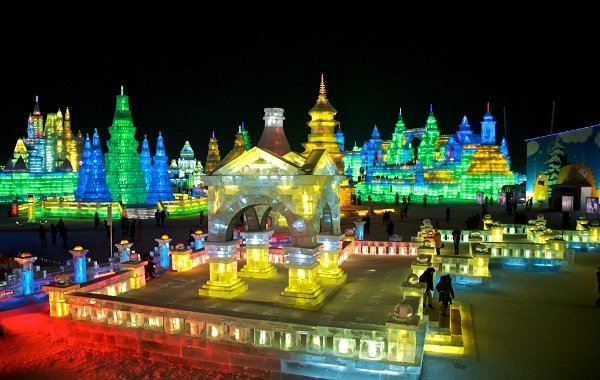A tale of two cities - Tianjin & Harbin
By Lesley Chai, Senior Analyst, JLL Tianjin
 We often hear people mention oversupply or financial difficulties when they talk about Tianjin's retail market because of the closure of several department stores this year. Industry observers also point to the emergence of E-Commerce and its negative effect on physical retail. The latest Singles Day shopping bonanza was a testament to this. Additionally, Tianjin's close proximity to Beijing makes for easy comparison, drawing people to the conclusion that Tianjin's retail market is largely immature. However, as a Tier II city, the large maturity gap between Tianjin and cities like Beijing or Shanghai should be expected. It's better to observe comparable cities to Tianjin to judge its retail market.
We often hear people mention oversupply or financial difficulties when they talk about Tianjin's retail market because of the closure of several department stores this year. Industry observers also point to the emergence of E-Commerce and its negative effect on physical retail. The latest Singles Day shopping bonanza was a testament to this. Additionally, Tianjin's close proximity to Beijing makes for easy comparison, drawing people to the conclusion that Tianjin's retail market is largely immature. However, as a Tier II city, the large maturity gap between Tianjin and cities like Beijing or Shanghai should be expected. It's better to observe comparable cities to Tianjin to judge its retail market.
Looking at northern China, there is another city of similar scale - Harbin. Like Tianjin, Harbin has a modern history and is an important transportation and economic hub in north-eastern China. We will have a look at the retail markets in Tianjin and Harbin to find their main similarities and differences.
The first difference is the economic background
Harbin's economy is slowing down, in a trend seen throughout the three provinces of the north-eastern China. Driven by natural resources and relying on heavy industry, Harbin's GDP growth slowed to 7% in 2014 from 9% in 2013. The slowdown is expected to continue because Harbin needs time to undertake reform and adjustment to develop tertiary industry, and this will be a challenging process. Meanwhile, Tianjin GDP continues to have a strong 10% growth rate. Furthermore, Tianjin's GDP at RMB 1,572 billion is almost three times the number in Harbin. The stronger economy not only results in the higher purchasing power of local consumers, which supports retail sales, but it also attracts investors, retailers and developers to enter Tianjin. Due to the economic base, the retail landscapes of Harbin and Tianjin are different.
Developer profile differs substantially between the two cities
In terms of nationality of the main developers in the two cities, about 24% of retail space in Tianjin is developed or owned by non-mainland China players such as Hang Lung, Shui On, Kerry and CapitaLand. As the SM Group, Hutchison and Kindom are coming to Tianjin next year, the proportion will increase to almost 31% by 2017. International players will enter the city and bring new practices with better designs and advanced management capabilities, which will lead to an improvement in the overall market environment. Intense competition from developers also encourages domestic and local players to focus on innovation and constantly follow market trends.
Harbin is still a retail market oriented towards the domestic developer. Foreign developers are responsible for the development of 16% of shopping mall space, and domestic developers will continue to dominate in the future supply pipeline. Parkson, CapitaLand and New World Real Estate are the main exceptions.
Different formats and influences in Harbin and Tianjin
 The diversity of developers in Tianjin also leads to different proportions for different formats of retail projects. Shopping malls account for 64% of total retail space in Tianjin, dominating the market. The department store format takes 26% and outlets account for 10%. Joy City and Galaxy International Shopping Center are popular shopping malls in Tianjin. Even though they enjoy high foot traffic and low vacancy rates, they are not able to attract people from outside the city in the way that Xidan in Beijing might. One project that does capture multiple cities around Tianjin is Florentia Village Outlets in Wuqing District. Major reasons for its success include convenient transportation close to Wuqing station, which is a stop on the Beijing-Tianjin express train service, as well as discounted luxury products from top global brands, and attractive Italian-style pedestrian streets.
The diversity of developers in Tianjin also leads to different proportions for different formats of retail projects. Shopping malls account for 64% of total retail space in Tianjin, dominating the market. The department store format takes 26% and outlets account for 10%. Joy City and Galaxy International Shopping Center are popular shopping malls in Tianjin. Even though they enjoy high foot traffic and low vacancy rates, they are not able to attract people from outside the city in the way that Xidan in Beijing might. One project that does capture multiple cities around Tianjin is Florentia Village Outlets in Wuqing District. Major reasons for its success include convenient transportation close to Wuqing station, which is a stop on the Beijing-Tianjin express train service, as well as discounted luxury products from top global brands, and attractive Italian-style pedestrian streets.
In Harbin, shopping malls and department stores account for a similar proportion of space. The outlet format started to appear in the market in 2015 with the addition of the Shanshan Outlets. Though unlike similar projects in Tianjin, the newly launched outlets in Harbin take up a large space, but are located in a new development zone across the Songhua River in the outskirts of the city. The project has relatively poor accessibility without any connecting subway line or railway stations which will negatively affect foot traffic and retail sales.
Harbin's shopping malls and department stores benefit from their location in the provincial capital as they attract customers from throughout Heilongjiang Province. Benefiting from tourism resources and other resources in the capital city, some retail projects in Harbin become the shopping destination of the whole province. Harbin's limited supply pipeline in 2015 and its presence as the region's retail headquarters have pushed the market vacancy rate to a level much lower than that of Tianjin. Though over the long term, steady leasing demand will push Tianjin's vacancy rate to a level similar to Harbin.
New format and retail landmark
Besides the three traditional retail formats, shopping mall, department store, and outlets, Tianjin has seen the emergence so-called "lifestyle centres." One example being a historical block called Wudadao in Tianjin's Heping District. Lifestyle centres are different in that they are located mostly outdoors, alongside walkable core areas. They feature more entertainment and F&B such as restaurants and bars and typically follow a common theme or style which creates synergy. Restored by Tianjin Historical Architecture Restoration and Development Co Ltd, Minyuan Stadium (in Wudadao Area) returned to its glory days in a different way - from holding sports events to bringing together world cuisine and entertainment. Minyuan Terrace and Xiannong Block has also performed well, and Xiannong Block Phase II is under construction to bring more choices to attract locals and tourists seeking historical architecture and a comfortable shopping environment. Through government support and development, projects are able to create city landmarks by combining the city's history and culture with modern-day commercial functions.
Similar to Tianjin, Harbin also has a landmark that displays the city's long history and prosperity. The landmark is the most famous shopping destination in Harbin - Central Street. Central Street's style and architecture was heavily influenced by proximity to Russia. Russian sculptures and buildings stand along the cobblestone road while many of the shops and restaurants are also Russian-themed. It truly gives the impression that one has arrived in Russia when walking along Central Street. At night, string bands, singers and a flower parade together with crowds of tourists and local shoppers make every day seem like a holiday. The one flaw is that most retail projects along the street are traditional department stores without attractive features or a distinguished brand mix. As a result, people - especially tourists - prefer walking outside to enjoy its unique environment rather than to go shop or to have food in such projects.
Tianjin's popular pedestrian street - Binjiang Avenue - seems to have a similar problem. However, developers of retail projects on Binjiang Avenue have already started a new round of adjustment. Following customer demand, more fast fashion brands have entered Binjiang Avenue, including C&A in Robbinz and Tianjin's first Forever 21 in a future development owned by Modern Group. As retailers, they also want to be located along the busiest walking street to benefit from the high foot traffic. Some mass market projects have been upgraded to mid-range with the introduction of anchors like Hailan Home.
After comparing the differences between Tianjin and Harbin in terms of developers, formats and development stages, it is clear to see that Tianjin is more developed than Harbin. However, Tianjin's Binjiang Avenue still has a lot to learn from Harbin's Central Avenue to reach its full potential as a pedestrian retail street.
---END---